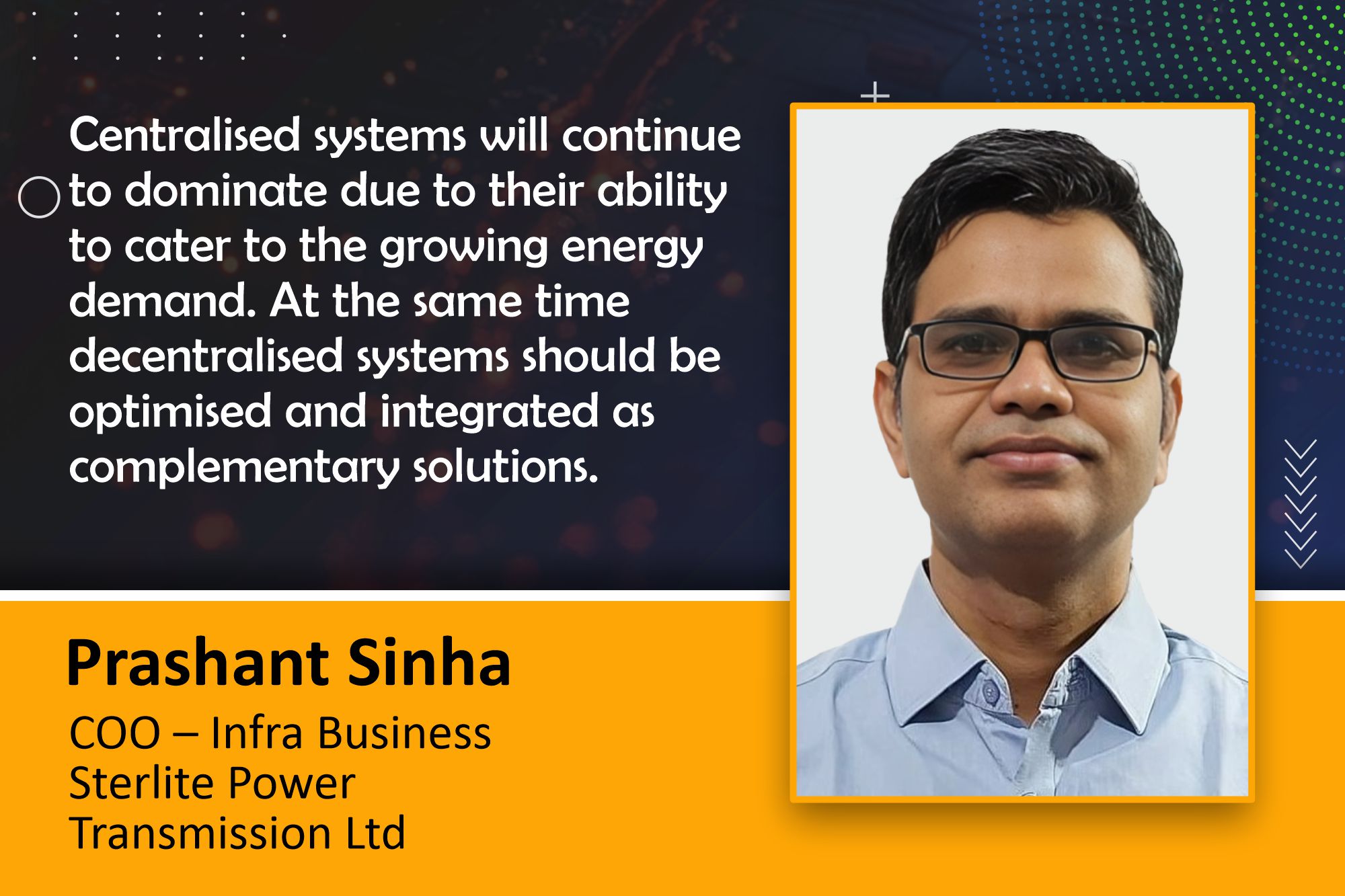Centralised grid provides foundational support for decentralised systems
By EPR Magazine Editorial January 27, 2025 7:54 pm IST
By EPR Magazine Editorial January 27, 2025 7:54 pm IST

The debate over centralised and decentralised energy systems dates back to the 1880s when two legendary inventors, Nikola Tesla and Thomas Edison, presented contrasting visions of electricity generation and distribution. While Edison advocated for decentralised energy systems with small, localised generators near load centres, Tesla championed the centralised approach leveraging large power plants to serve broader areas. More than a century later, centralised systems have become the dominant model forming the backbone of power grids worldwide. Yet, decentralised energy systems are increasingly gaining traction due to technological advancements and their potential for addressing specific energy challenges.
Decentralised energy systems, including distributed generation and rooftop solar, play a crucial role in enhancing last-mile connectivity. By generating power close to the point of consumption, these systems can reduce transmission losses and provide a solution for remote or underserved areas where extending centralised grid infrastructure is costly or impractical. Rooftop solar systems, in particular, maximise the use of available rooftop space without requiring additional land, which is a scarce resource in India. Moreover, by reducing dependency on the grid and lowering electricity bills, rooftop solar can empower individuals and communities to take charge of their energy needs. However, the scope of decentralised systems is limited. Standalone distributed systems cannot sustain themselves without the support of a centralised grid. This dependency arises from the fundamental differences in efficiency, scale and cost optimisation between centralised and decentralised systems. Centralised systems benefit from economies of scale, enabling the construction of large power plants with higher capacity and lower per-unit costs. Additionally, centralised systems have higher plant load factors (PLFs) and lower operation and maintenance costs than rooftop or smaller distributed systems.
For example, ground-mounted large-scale solar projects consistently outperform rooftop solar installations in terms of efficiency and reliability. The centralised nature of these projects allows for better resource management, advanced monitoring and maintenance, leading to higher energy output and lower costs. In contrast, the PLFs of rooftop solar systems are often lower, and the operation and maintenance costs per unit are higher due to their smaller scale and dispersed nature. Another critical factor is the reliability and availability of centralised systems compared to decentralised systems. Centralised grids offer robust infrastructure, ensuring higher availability and reliability even during peak demand or adverse weather conditions. Conversely, decentralised systems, particularly those at lower voltage levels, face challenges in ensuring consistent availability and reliability. This underscores the need for a strong centralised grid as the backbone of any power system.
The future of India’s energy system lies in striking a balance between centralised and decentralised approaches. Centralised systems will continue to play a dominant role due to their ability to cater to the country’s growing energy demand efficiently and cost-effectively. At the same time, decentralised systems should be optimised and integrated as complementary solutions. For instance, rooftop solar can reduce peak demand on centralised grids, easing the strain on infrastructure and enhancing grid resilience. In a country like India, where energy consumption is steadily rising, both systems must coexist and work in tandem. The centralised grid can provide the foundational support required for decentralised systems to thrive. In contrast, decentralised systems can address niche needs, such as powering rural or remote areas and reducing the carbon footprint of urban centres.While the enthusiasm for decentralised systems is justified, it is crucial to acknowledge their limitations and understand that they cannot function as standalone solutions. A balanced approach that leverages the strengths of both centralised and decentralised systems is essential to effectively meeting India’s energy needs.
We use cookies to personalize your experience. By continuing to visit this website you agree to our Terms & Conditions, Privacy Policy and Cookie Policy.